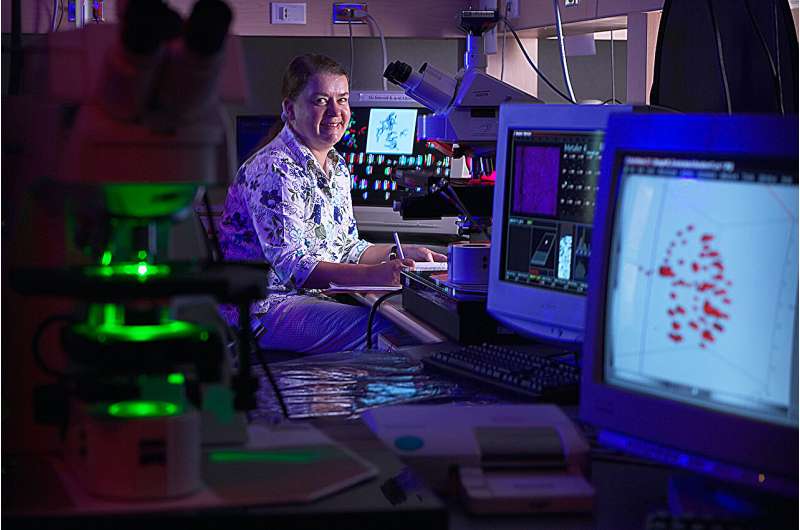This article has been reviewed according to Science X's editorial process and policies. Editors have highlighted the following attributes while ensuring the content's credibility:
fact-checked
peer-reviewed publication
trusted source
proofread
Medical breakthrough provides hope for early risk stratification of a deadly blood cancer

Dr. Sabine Mai, Canada Research Chair in Genomic Instability and Nuclear Architecture of Cancer with the Rady Faculty of Health Sciences recently co-authored an article published in the American Journal of Hematology. The groundbreaking study shows early risk stratification of smoldering multiple myeloma, a precursor state to multiple myeloma, a deadly form of blood cancer.
Multiple myeloma remains an incurable blood cancer, with about 4,000 people newly diagnosed in Canada per year. Patients currently survive an average of eight years after diagnosis.
Patients with smoldering multiple myeloma remain asymptomatic until the disease progresses to multiple myeloma. Currently there is no accurate prognostic tool in the clinic to identify patients who will progress to multiple myeloma.
"Without a cure, the question is how long can we manage a myeloma patient's disease and improve on their quality of life," Mai told UM Today.
"This breakthrough allows us to risk-stratify smoldering multiple myeloma to identify the subgroup with a high risk of progression, which allows for tailored treatments in this risk group. Equally important, the published assay allows us to monitor the larger subgroup of patients with stable smoldering multiple myeloma."
Mai uses three-dimensional imaging and microscopy to visualize genetic material inside a patient's cell to reveal genomic changes and instability. By marking the ends of chromosomes, called telomeres, 3D measurement tools the team developed indicate whether the cell is stable or cancerous well before clear symptoms are present.
The study was conducted by Telo Genomics, a biomedical research company founded by Mai in 2014. The clinical study was conducted in collaboration with the Mayo Clinic in Rochester, Minnesota.
"I began this research ten years ago here at UM," said Mai. "When my early data showed promising results in 14 different cancers as well as Alzheimer's Disease, I started Telo Genomics to support the necessary clinical studies. The focus of the company quickly turned to multiple myeloma and clinical studies were completed with actionable results for the patients."
"This cutting-edge discovery is generating new opportunities for academic growth and better-informed patient care," said Mario Pinto, Vice-President (Research and International). "Mai and Telo Genomics exemplify the UM strategic research priority for health and well-being by translating this research into real impacts for those suffering with this deadly blood cancer across Canada and the United States."
To achieve these groundbreaking results, Mai focused on single cell nuclear imaging using 3D imaging and analysis. Mai also uses super resolution imaging to detect the cancer-related DNA and genome structure at nano resolution.
"We had the first super resolution microscope in the world at the Genomic Center for Cancer Research and Diagnosis, which I established at UM and at CancerCare Manitoba," said Mai.
This new technology also shows potential in detecting other forms of cancer. Mai's team also published results on the identification of thyroid cancer histotypes last year.
Each form of cancer must be individually tested with large scale validation trials at costs vastly exceeding the values of individual research grants. As a publicly traded company, Telo Genomics is able to engage investors and raise capital at a scale Mai couldn't accomplish alone.
"Patient samples are being received for testing as we speak, so we have really taken this from the bench to the bedside, which is deeply gratifying," said Mai.
"Let's dream big. If we apply the right treatments early enough, the outcome will be the increased progression-free survival of patients—and potentially someday, a cure for myeloma."
More information: Shaji Kumar et al, Three‐dimensional telomere profiling predicts risk of progression in smoldering multiple myeloma, American Journal of Hematology (2024). DOI: 10.1002/ajh.27364




















